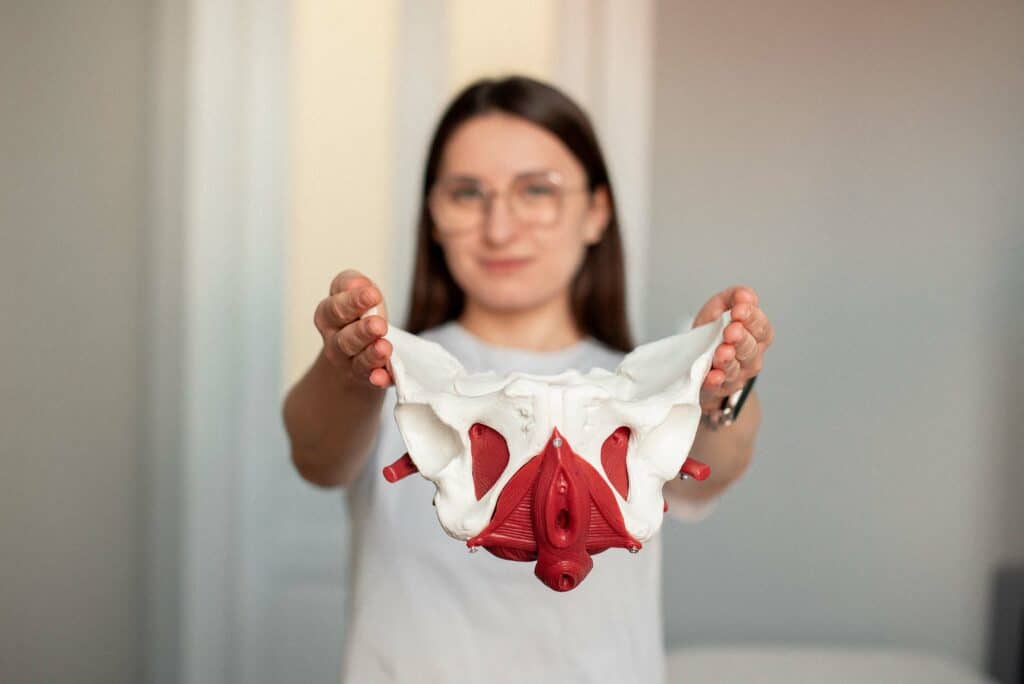
Pelvic Floor Muscles (PFM) in both men and women are located at the bottom of the pelvis, between four bony points: the pubic bone, tailbone, and two sit bones. They surround the urethra, bladder, rectum, and reproductive organs. The pelvic floor muscles consist of three layers: deep, middle, and superficial. The deep layer is made up of slow-twitch fibers and functions as tonically-postural muscles, responsible for maintaining an upright posture and designed for prolonged work, with slow contraction and difficult relaxation. The superficial layer is composed of fast-twitch fibers, which have the ability to contract quickly but also fatigue quickly. They are responsible for reacting to sudden increases in pressure and preventing issues such as urinary incontinence. Regardless of their structure, all muscles need a phase of relaxation or rest, without which they are unable to perform their functions, such as supporting pelvic organs, controlling urine retention, or maintaining a high quality sexual life.
As a result of processes such as aging, nerve damage, and especially improper pelvic floor activity, the number of slow-twitch fibers decreases while the number of fast-twitch fibers increases, affecting the lower abdomen’s endurance.
During the evolutionary process, the Pelvic Floor Muscles have undergone specific adaptations. They are responsible for supporting the upper half of the body, and in combination with the diaphragm and muscles of the back and abdomen, they limit the spread of intra-abdominal pressure. These muscles also control the final sections of the digestive, reproductive, and urinary systems. In men, the pelvic floor muscles are more densely woven than in women (due to the size of the pelvis), more resistant (depending on the number of fast and slow-twitch fibers), and less exposed to frequent hormonal changes. However, it is essential to remember that they serve the same supportive function in women.
The pelvic floor, along with the diaphragm, the transverse abdominis muscle, and the multifidus muscle, plays an essential role in trunk stabilization. The Pelvic Floor Muscles stabilize the pelvic ring in a standing position and, during walking, are responsible for stabilizing the supporting leg and braking the stepping leg. In women, the PFM is responsible for sexual functions, such as ensuring proper blood supply and flexibility, which can affect achieving sexual satisfaction. The PFM is also involved in male sexual functions, with erectile dysfunction affecting around 10% of healthy men and almost 40% of men with chronic diseases. Furthermore, these muscles are responsible for holding urine, gas, and feces. About 30% of men have problems with urinary incontinence, and about 15% experience issues with fecal incontinence. In women, they also play a role in the course of childbirth.
To relax Pelvic Floor Muscles, some practical ways include engaging in deep breathing exercises, yoga, and Pilates, as well as pelvic floor physical therapy and relaxation techniques, such as progressive muscle relaxation. Avoiding activities that strain the pelvic floor muscles, such as heavy lifting, constipation, and high-impact exercise, can also help. Overall, maintaining healthy habits, such as good posture, hydration, and a balanced diet, can promote pelvic floor health.

